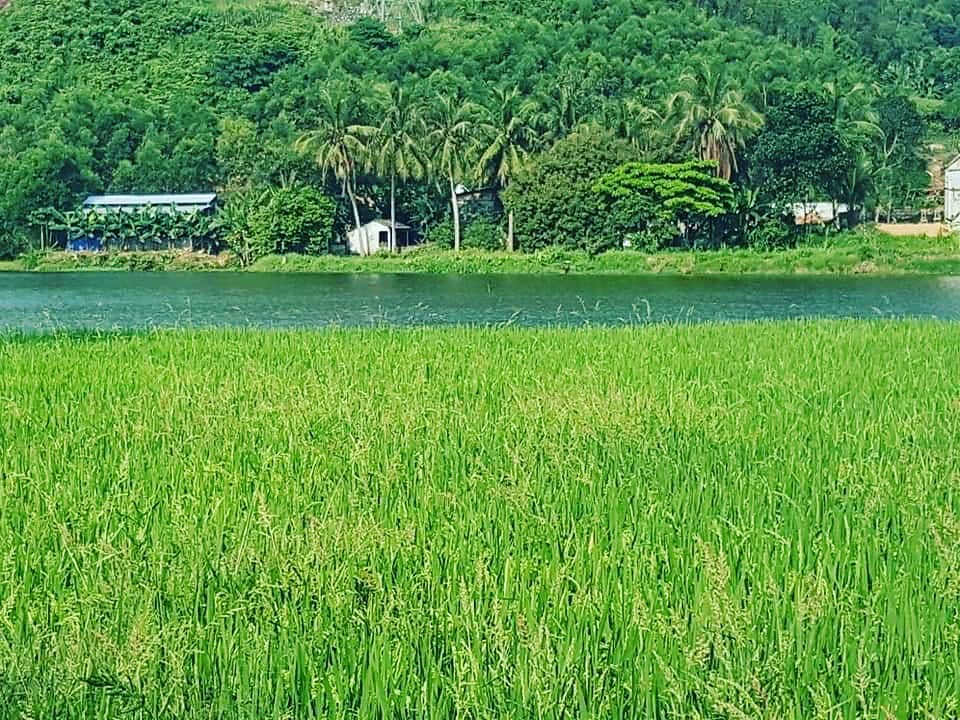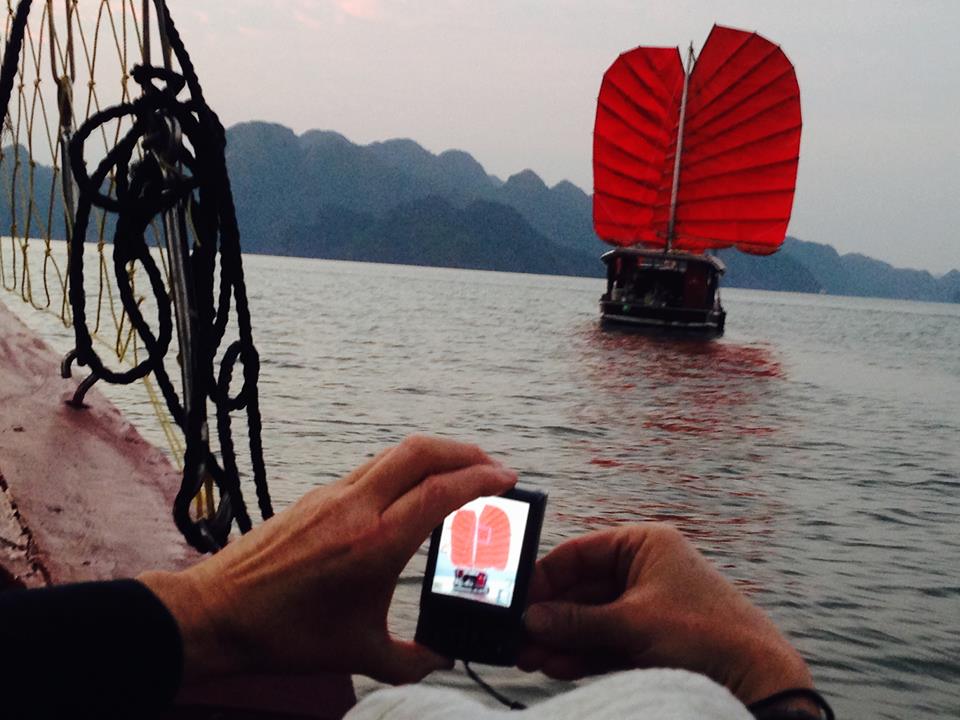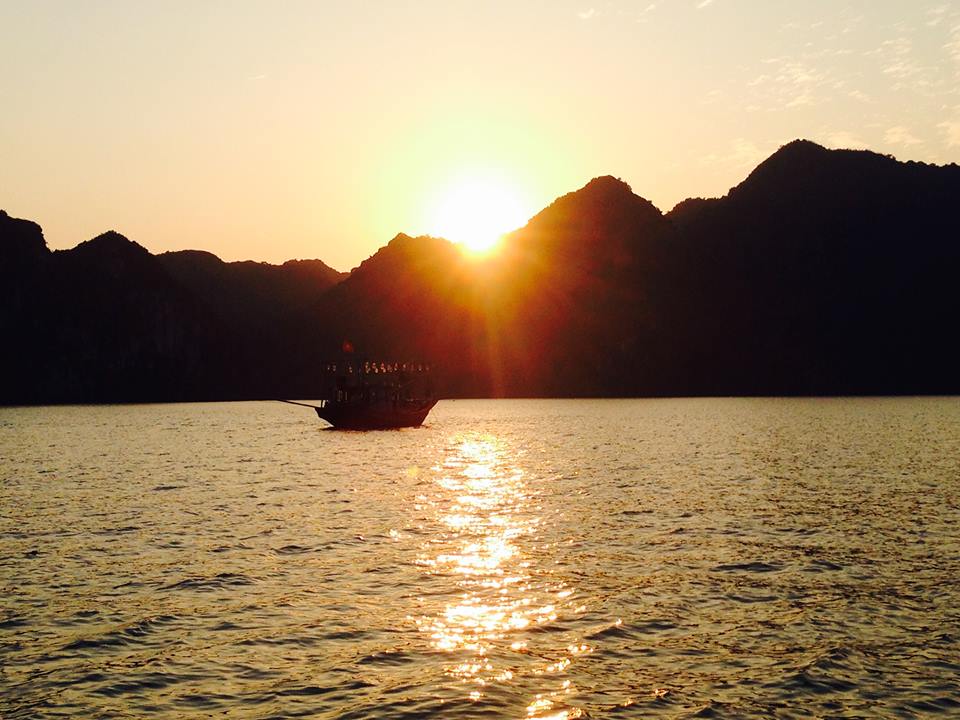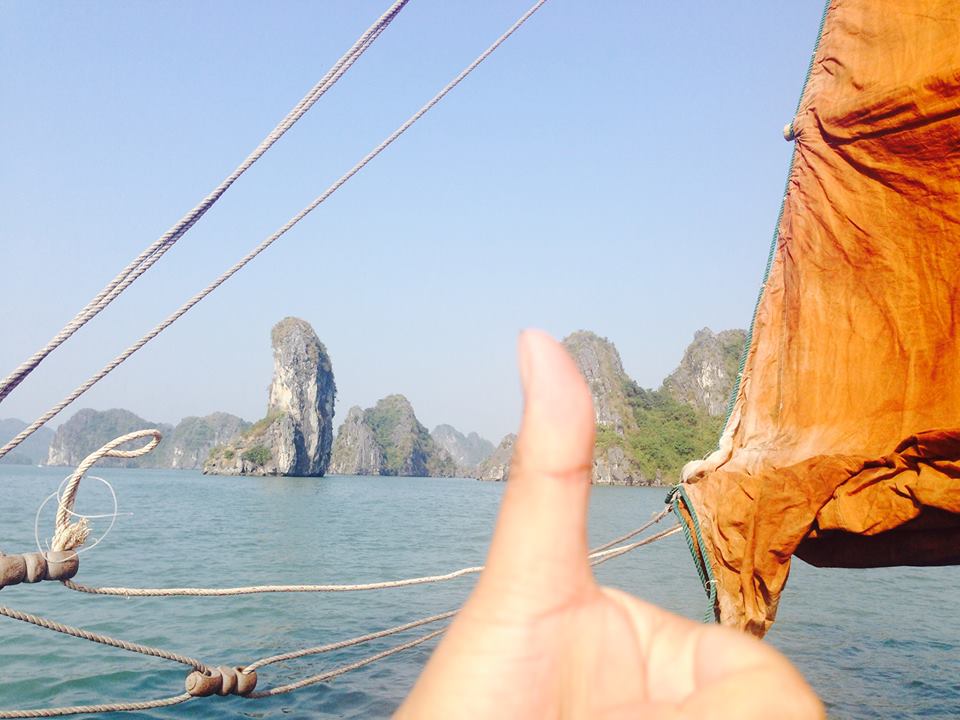Blog de Voyage
Dong Du Village
Textiles of Vietnam
Updated: 27/7/2018 | 11:32:02 PM
Vietnam has a centuries-old tradition of silk weaving and embroidery. In Vietnam during feudal times silk was considered an extreme luxury. Associated with nobility, silk was worn only by Kings, queens and mandarins. Vietnam's various dynasties developed strict rules concerning colour, ornamentation, style and fabric of clothes worn by aristocrats.
The clothes worn by Vietnam's nobles featured the royal symbols of dragons, phoenixes, tortoises and cranes-that adorned the robes of Chinese aristocrats. Yet the garments themselves were constructed differently, incorporating elements of traditional Vietnamese design. Vietnam's Nguyen emperors (1802-1945), for example, wore high-necked long con (grand audience) and long chan (formal military gowns, similar to the traditional Vietnamese ao dai tunics that are popular today. Golden hues were reserved for the emperor, as were five-clawed dragons - both symbols of imperial rule.
Vietnam's best silk came from the area of Ha Tay, south-west of Hanoi in the Red River Delta. Silk from this area is often called "Ha Dong silk". The art of silk weaving is said to have begun in Ha Tay as long as 2,000 years ago. Between the 16th 18th centuries, Ha Tay's silk industry flourished. Many villages still bear the name La - the Chinese word for 'silk'. The most famous villages of all were Tring Tiet and Van Phuc, both of which still produce silk today. Today, residents of traditional silk villages like La Ca, Trieu Khuc and Van Phuc are still producing silk, although both the techniques and the quality of the cloth have changed. In Van Phuc, 12km southeast of Hanoi, generators and mechanised looms have replaced handlooms.
About 70 percent of the silk sold in Vietnam is domestically made however some weavers are reviving traditional techniques to turn out high-grade cloth. Twenty percent of the silk exported by Vietnam in 2000 was woven by hand.
My A silk is called as “Queen” of silks and takes over 20 days to create a silk batch. The first stage is the weaving of the cloth with every single thread examined for uniformity to ensure the smooth surface of the fabric. After weaving the silk is soaked, washed, dried, kept with forest resin, dyed, and sun dried twice. The silk is dried in a soft sunlight in order to protect silk from damage. Forest resin for silk soaking must be extracted at the right season in order to make right colour. All the steps are handmade without chemical treatment therefore silk is durable, shinning with the time flow.
Mulberry raising and silk weaving is a traditional craft practiced in Mai Chau is the most developed weaving village for centuries. The life of Mai Chau people has been changed since the 2nd year in Hong Duc’s dynasty (15th century), the northern people came and brought along this trade. Silk & tussore are the specialties of this region . Since 2000, Ma Chau village has achieved great development in quality and quantity to meet the higher market demand. There are 400 households among 600 households in whole village have their own factory with more than 4,000 looms.
Brocade
The Vietnamese brocades are woven in small communities that have a rich tradition of silk weaving. The symbols and patterns are a part of their heritage and history. The purchase of the Vietnamese silks help provide economic growth in small communities. Silk brocade fabrics in a variety of rich, colours, patterns and detail are woven with metallic threads and are generally about 30" wide.
Brocade weaving is practiced by the Cham ethnic group across areas of central Vietnam. Stylized designs are embellished with many types of designs such as: flower, bird, tortoise, gong, jar, elephant’s tusk. The colours have significant meaning in the brocades for example red represents passion and love and yellow meaning the light & the harmony coordination between human and nature.
Embroidery
Embroidery has a long history in Vietnam where different ethnic groups have developed the art over many centuries into a unique form of cultural expression. The art of embroidering on silk was introduced into communities of the north during the 17th century from China. The practice beginning in the northern provinces eventually reached the Old Quarter of Hanoi, where various guilds were set up. In its original form silk embroidery utilised just five colours of thread - yellow, red, green, violet and blue - and was used mainly to adorn temples and pagodas. Read more about Hmong embroidery...
Van Lam is considered to be one of the cradles of traditional embroidery which is very famous in Vietnam. According to village annals, embroidery has existed there for over seven centuries. Currently, of the eight hundred and thirty households in Van Lam, more than seven hundred are skilled in this village industry of making embroidery with lace. The villagers use a multitude of embroidery frames, some as large as a sedge mat, and some as small as a hand. The skilful combination of embroidery and lace from Van Lam continues to be handed down from generation to generation.
The many minority groups of Vietnam also have their own unique embroidery styles. Much of the clothing worn by some of the minority groups such as the Hmong and Dao peoples are elaborately decorated in fine embroidery and braiding. In some pieces the work is so fine that it is almost impossible to tell the front from the back. The Hmong groups also embellish their clothing (which in the past was all made from hemp fibres) with beautiful batik designs
(Source: Dong Du Eco Farmstay)
Autres Nouvelles
- Traditional Textiles villages in Nghe An province
- The treasure of Western Nghe An
- Phu Xai Lai Leng Summit - Nghe An
- Parc national de Phong Nha – Ke Bang
- La beauté irrésistible des champs de tournesols à Nghia Dan, Nghe An
- Summer Getaway at Pu Mat National Park, Nghe An, Vietnam
- The Western Nghe An Biosphere Reserve
- Réserve naturelle de Pu Luong, trésor caché du Tonkin
- Nghe An Province: Unique homestay tours delight foreigners
- New nature reserve in Nghe An, Vietnam











